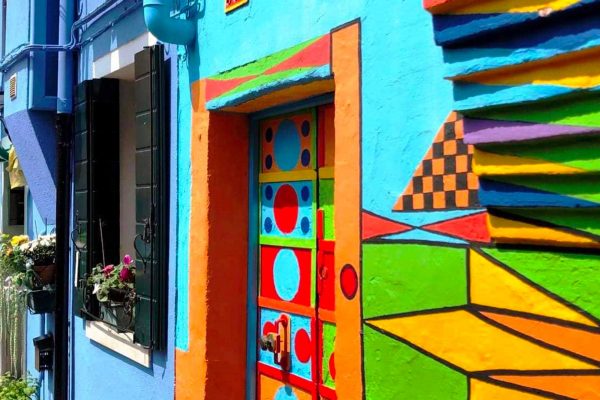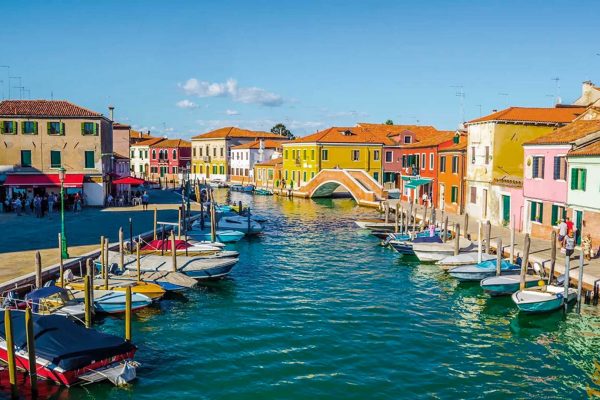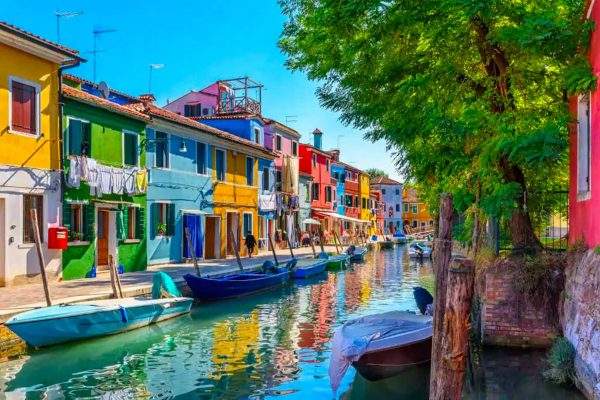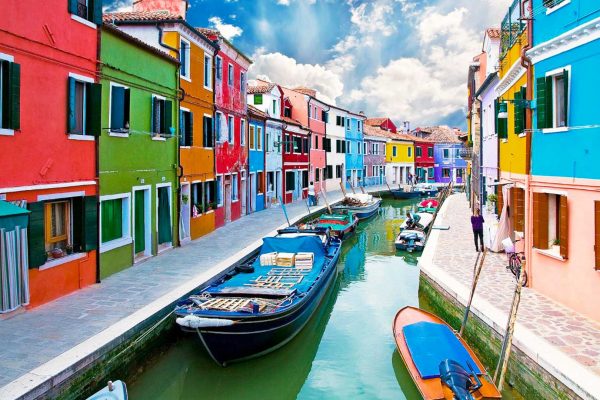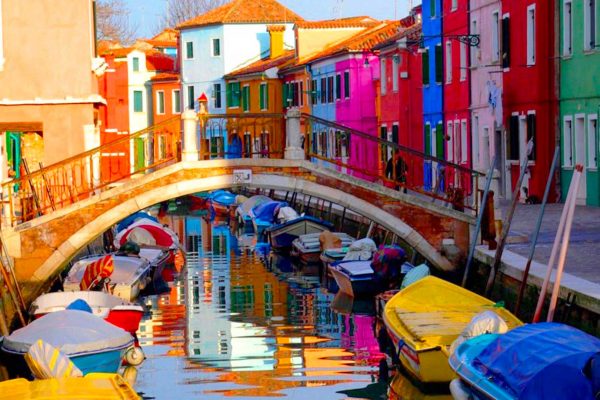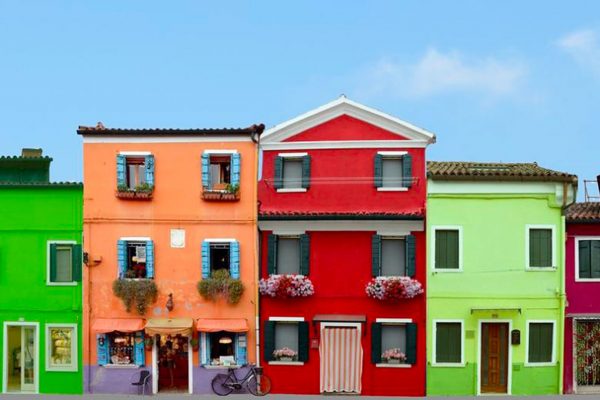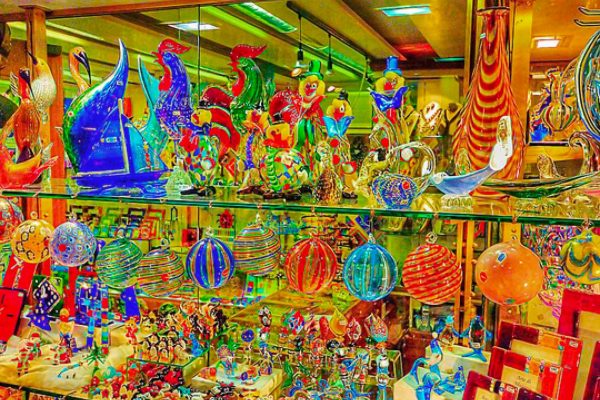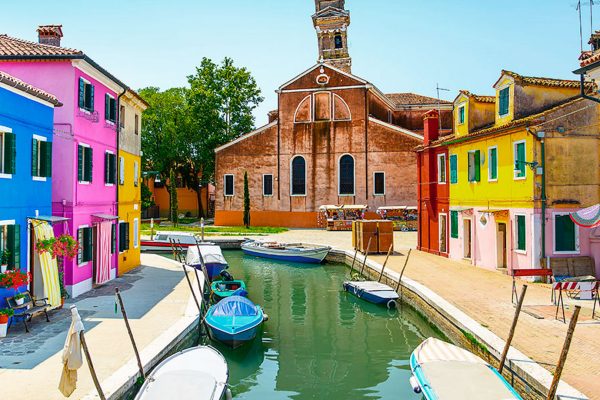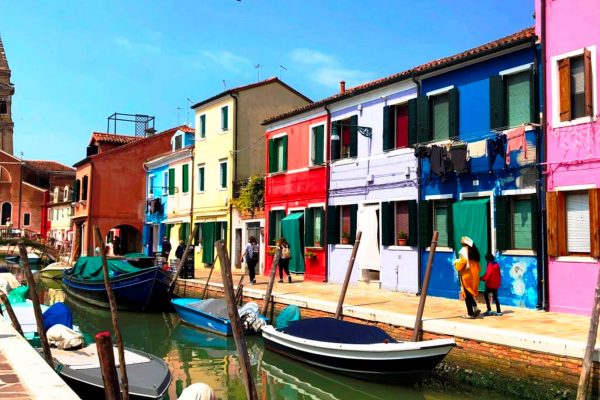Useful documents
The Islands of Venice
Murano In the 8th century began the traditional art of molding the crystal in an exquisite and subtle form, which has become famous. In order to prevent fires on land that could be produced during the glassmaking process, Murano was elected as a “floating” factory, where master glassmakers transformed the sand into glass using air and fire to create magnificent pieces. Since the process of creating glass was very complex and economically relevant, glassmakers were allowed to enjoy some immunities of the time, but they were not allowed to leave the Republic in order not to divulge the secrets of their art.
Burano The island of Burano is actually a small archipelago of 5 islands connected through bridges. In the 16th century the lace of Burano became the most famous in Europe and in 1872 was created the first school of lace, known as “Scuola dei Merletti.” Even when it is possible to see and buy these beautiful works, authentic pieces cost a lot and are difficult to find since their elaboration can take many weeks.
Torcello After the fall of the Roman Empire, Torcello was one of the first lagoon islands that was populated, here the Venetians fled from the mainland to take refuge from repeated barbarian invasions. It was for a long time controlled by the Byzantines. From the 12th century onwards the Torcello summit ended due to the swamps and malaria with them, the population left the island.
What are Murano, Burano and Torcello today?
Murano is currently famous for the sales of blown glass and for the Glass Museum, the Church of San Donato, and the furnaces where it is possible to see how blown glass is born.
Burano is famous for the handcrafted lace making, even today we can see the ladies sit at the doors of their colorful houses to weave the most impressive lace provided in unusual and beautiful ways.
Torcello is now an island with only seventeen residents, but without a doubt, its invaluable archaeological heritage and the tranquility of the island make it a popular tourist destination.
Curiosities of Murano, Burano and Torcello
Did you know that the handmade tradition of Murano glass, passed from parents to children? The Murano glass is an Italian symbol of luxury and history that develops in a picturesque location, an island within walking distance of Venice where it is possible to arrive by boat.
Did you know that in Burano there is a bell tower with a leaning like the Tower of Pisa? Burano has a single square and a single church with a bell tower that has a strong inclination because the bases that make up the subsoil have yielded.
Did you know that in Torcello is the Devil’s Bridge? According to a local legend, this bridge was built in a single night by the devil and for this reason was not completed. In fact, the legend of the devil who builds bridges stretches throughout Italy and goes back to the time when it was not possible to explain how a bridge was held.
Why visit Murano, Burano and Torcello?
Murano For centuries the life of this small island revolves around furnaces where glassware is blown. Murano is shaped like a small Venice and is made up of 9 small islands joined by bridges in the middle of the Grand Canal.
Burano A small island located 9 km north of Venice is inhabited by approximately 3000 people. This is a very quiet island that has graceful houses painted with vivid colors, with canals instead of streets and boats instead of cars.
Torcello The main attraction is the Cathedral of the Assumption (639), founded with Byzantine works of the 11th and 12th centuries, includes several mosaics. Another attraction of the island is the church of Santa Fosca of the 11th and 12th centuries, is surrounded by a portico in the shape of a Greek cross, and a museum with based in two palaces of the 14th century.
